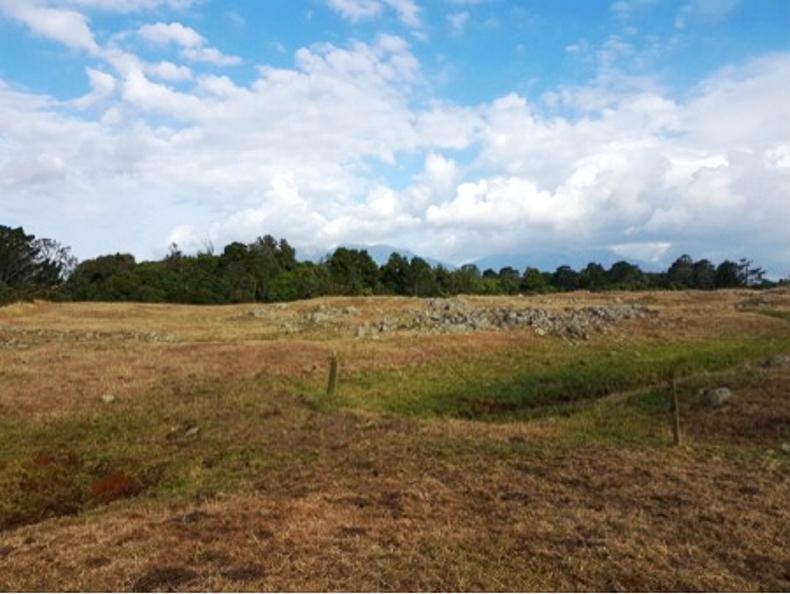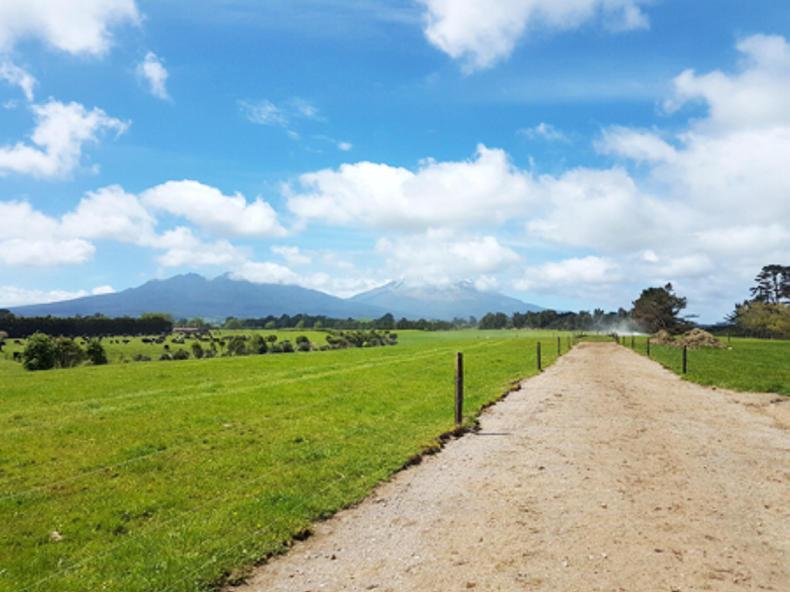My name is James Lawn and I’m currently contract-milking our Okato family farm of 144 effective hectares (172ha total) on the ring plain of Mt Egmont in the region of Taranaki, on New Zealand’s North Island.
We aim to calve 420 cows in a spring-calving low-input farming system, with major focus on a grass-only diet (95%).
The herd is majority Kiwi-cross, with two herds run on the farm to suit the infrastructure and layout through a 44-bail DeLaval rotary parlour.
Before returning to the home farm, I spent four years at Massey University studying agricultural business and agricultural science. Following university, I worked for DairyNZ, the levy-based research organisation, as a consulting officer in South Otago.
I then travelled the world for almost three years before returning home and taking on the challenge of farming and all the issues, problems, rewards and gratification that come with it.
We’re in the middle of a severe drought in Taranaki and other parts of New Zealand.
Before this current drought, we had a continued long wet period. For those of us in Taranaki, it was almost 18 months of consistent rain. The longest dry period in those 18 months was an eight-day period prior to October 2017.
With very low occurrence of suitable off-pasture systems and grass-only wintering, the resulting pasture damage through pugging (soil compaction following poaching) is almost predictable.
Since 14 October, we had 53 dry days out of 75. The 12 wet days delivered meagre amounts totalling 79mm. One-third of that fell in one day.
Combine this with wind and it has resulted in a very dry and very early adverse event for milk production, as indicated by Minister Damien O’Connor on his visit to the region and our farm on 23 December.
We here in Taranaki like to call it a green drought, because although we are still green due to some early morning dew, some light rainfall and high prevalence of riparian planting, we are very much in a drought situation.
A sub-tropical storm hit most of New Zealand over the Christmas and new year period, with some areas receiving over 100mm of rain.
We recorded 54mm here, which is fantastic, but will need lots more for any growth. The rain was good for morale, but we are not out of the woods yet.
My average pasture cover (APC) last week sat at 1,469kg DM/ha, dropping from 1,590kg two weeks prior.
We made 69 bales from 14.5ha, which should be closer to 130, and harvested it mainly to try to keep pasture quality.
APC should be as near to 2,000 kgDM/ha as possible to maintain growth and quality of pasture, but high levels of pasture damage and lack of desirable pasture species like ryegrass and clover mean that we have been consistently below target for the whole season. This lack of pasture is compounded by an increasingly difficult market to get supplements, mainly palm kernel expeller, the desire of the farm owner to stay low input and no rainfall forecast.
So I’ve taken the extreme action of drying off 26% of my herd (106 cows).
I’ve also changed my milking from twice a day to three in two days and finally once a day in order to maintain body condition score (BCS) in the cows still milking.
I’ve continued with selective drying off of animals falling below BCS and production thresholds and plan to dry off another 60 cows in the first weeks of 2018.
Farming forever seems to throw challenges at us, whether these be beyond the farm gate market changes or a simple thing like lack of water. All things we plan, manage and endeavour to overcome or mitigate.
For us here in Okato, and indeed the rest of New Zealand, this will be a season we wish we never had, but hopefully will result in some lessons we’ll never forget.
For now, it’s back out to try to find some grass somewhere on the farm, and keep doing that rain dance we were asking everyone to stop three months ago!






 This is a subscriber-only article
This is a subscriber-only article














SHARING OPTIONS: